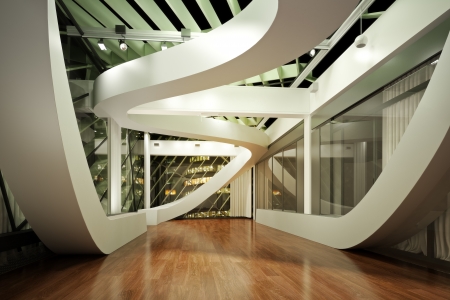Introduction: The Evolution of Interior Design in India
India’s interior design landscape has witnessed a remarkable shift over the past decade, fuelled by rapid urbanisation, rising aspirations, and an increasing embrace of global trends. Traditionally rooted in local craftsmanship and regional aesthetics, the industry is now experiencing a digital revolution. Modern Indian homeowners and businesses are demanding more personalised, functional, and visually compelling spaces—driving designers to adopt advanced technological solutions. The integration of Computer-Aided Design (CAD) and 3D visualisation tools has not only streamlined workflows but also enabled greater creativity and precision. As lifestyle preferences evolve and technology becomes ever more accessible, these digital tools are setting new benchmarks for innovation in Indian interior design, paving the way for smarter, faster, and more client-centric solutions.
2. Understanding CAD & 3D Visualisation: Game-Changers for Designers
Computer-Aided Design (CAD) and 3D visualisation have become essential tools in the Indian interior design landscape, revolutionising how professionals plan, present, and execute projects. Traditionally, Indian designers relied on hand-drawn sketches, mood boards, and physical samples to communicate their ideas. However, with the advent of digital solutions, the process has become more precise, collaborative, and client-centric.
CAD enables designers to create detailed floor plans and technical drawings that are not only accurate but also easily modifiable as per client feedback. 3D visualisation takes this a step further by creating lifelike renderings and walkthroughs that help clients visualise the final space before a single brick is laid or a piece of furniture is placed. These technologies are particularly valuable in India’s diverse market, where cultural preferences and regional styles play a significant role in design outcomes.
Let’s break down how these tools are being integrated into daily practice by Indian designers:
| Tool | Traditional Approach | With CAD & 3D Visualisation |
|---|---|---|
| Design Planning | Hand-drawn sketches, manual measurements | Digital floor plans with precise dimensions and easy revisions |
| Client Communication | Mood boards, verbal explanations | Lifelike 3D renders and virtual walkthroughs for better clarity |
| Cultural Adaptation | Physical samples for colour/material selection | Real-time material and colour changes within software to suit local tastes |
| Project Collaboration | Email/phone coordination between stakeholders | Cloud-based sharing of designs for seamless teamwork across cities like Mumbai, Bengaluru, Delhi, or Chennai |
This digital transformation empowers Indian designers to blend tradition with technology—be it creating vastu-compliant layouts for a Hyderabad home or showcasing sustainable materials preferred in Kerala. As clients increasingly expect personalised experiences and quick turnarounds, CAD and 3D visualisation are no longer optional but fundamental to staying competitive in India’s vibrant interior design sector.

3. Key Benefits for Indian Homes & Commercial Spaces
One of the most significant advantages of adopting CAD and 3D visualisation in the Indian interior design landscape is the ability to efficiently plan and optimise space utilisation, a crucial factor given the diversity in property sizes from compact urban apartments to sprawling bungalows and commercial spaces across metros like Mumbai, Bengaluru, and Delhi. With advanced digital tools, designers can accurately map out layouts that maximise every square foot, accommodating joint families or flexible workspaces as per Indian lifestyle needs.
Efficient Planning for Diverse Indian Spaces
Through detailed floor plans and lifelike 3D walkthroughs, both homeowners and business owners can visualise their interiors before execution. This ensures that vastu compliance, natural light flow, and ventilation – all highly valued in Indian culture – are seamlessly integrated into the design process. For commercial spaces, this results in better workflow management and customer-centric layouts tailored to India’s vibrant retail and hospitality sectors.
Budget Optimisation & Cost Control
CAD software enables precise measurement and material calculations, which is vital for cost-sensitive Indian clients. By virtually simulating different material options and finishes, designers can provide accurate estimates upfront, reducing wastage and preventing budget overruns. This transparent approach fosters trust with clients, a cornerstone of successful long-term relationships in the Indian market.
Customisation Tailored to Indian Preferences
Indian homes often blend tradition with modernity – think modular kitchens alongside pooja rooms or contemporary office interiors featuring local art motifs. 3D visualisation empowers clients to customise everything from colour palettes to furniture placement according to their personal taste or regional influences. Whether it’s integrating jali partitions for privacy or designing multi-functional spaces suited for festive gatherings, these technologies make it easy to adapt interiors for India’s unique requirements.
Collaborative Decision-Making
With real-time visual updates shared digitally, families can involve elders or stakeholders in decision-making regardless of location – a practical benefit in India’s joint family systems or when handling NRI (Non-Resident Indian) projects. This collaborative process reduces misunderstandings and speeds up approvals, making project execution smoother and more efficient.
In summary, CAD and 3D visualisation are rapidly becoming indispensable tools for interior designers across India by delivering smarter planning, cost savings, and personalisation that resonate with the country’s evolving tastes and practical needs.
4. Bridging Client Expectations & Cultural Preferences
India’s interior design landscape is a vibrant blend of tradition, modernity, and deep-rooted cultural values. As Indian homeowners increasingly seek bespoke spaces that reflect their heritage and personal aspirations, the challenge for designers lies in aligning these expectations with practical execution. This is where advanced CAD (Computer-Aided Design) and 3D visualisation tools become game-changers, enabling seamless integration of traditional aesthetics and contemporary needs.
Visualising Vastu-Compliant Spaces
Vastu Shastra, India’s ancient architectural science, remains a key consideration for many clients. Modern design tools allow professionals to digitally map out floor plans that adhere strictly to vastu principles—such as room orientation, entry points, and elemental placement—before any physical work begins. Through interactive 3D models, clients can see precisely how vastu compliance translates into spatial arrangements, ensuring peace of mind and clarity from the outset.
Embracing Local Materials & Artisanship
Indian interior design has always celebrated indigenous materials like sandstone, teak wood, terracotta tiles, and handwoven textiles. With CAD and 3D visualisation, designers can accurately simulate the textures, colours, and patterns of these materials within proposed layouts. This not only helps clients make informed decisions but also preserves the authenticity of Indian craftsmanship in the final outcome.
How Modern Tools Align with Indian Design Aspirations
| Traditional Expectation | Modern Tool Application | Client Benefit |
|---|---|---|
| Vastu-compliant layouts | Digital floor plan mapping & 3D walkthroughs | Confidence in spiritual harmony & spatial flow |
| Use of local materials | Material libraries featuring Indian options | Accurate visualisation of finishes & textures |
| Cultural motifs & artwork | Customisable design templates in CAD software | Bespoke interiors reflecting personal heritage |
| Family-centric spaces | Scenario-based 3D simulations for diverse needs | Satisfaction with functional & aesthetic balance |
Catering to Pan-Indian Diversity
The diversity across India—from Kerala’s earthy minimalism to Rajasthan’s ornate grandeur—demands high adaptability from designers. CAD and 3D visualisation platforms empower them to showcase region-specific concepts tailored to each client’s linguistic, regional, and lifestyle nuances. This technology-driven approach ensures that every project resonates with authenticity while meeting aspirational benchmarks.
5. Adoption Challenges & Industry Trends in India
Despite the undeniable advantages of CAD and 3D visualisation, their widespread adoption within the Indian interior design sector faces several practical hurdles.
Skill Gaps Among Designers and Architects
A significant challenge remains the shortage of professionals adept at advanced CAD software and 3D rendering tools. Many seasoned Indian designers are still transitioning from traditional methods to digital platforms, creating a distinct skill gap. To bridge this, leading design institutes and industry bodies are increasingly offering specialised training programmes and certification courses tailored for CAD and visualisation skills. Online learning platforms have also become popular among younger designers eager to upskill rapidly.
Infrastructure Limitations in Tier-II and Tier-III Cities
While metro cities like Mumbai, Bengaluru, and Delhi have largely embraced digital design technologies, infrastructure limitations persist in smaller towns. Issues like unreliable internet connectivity, limited access to high-performance hardware, and lack of exposure to global design trends slow down technology adoption. However, government initiatives focused on ‘Digital India’ and growing investments in IT infrastructure are gradually improving the situation across urban and semi-urban centres.
Cost Considerations for Firms and Clients
The upfront investment required for licensed CAD software, high-spec computers, and skilled manpower can be daunting for many boutique studios or independent designers. Some clients may also hesitate to bear additional costs associated with sophisticated 3D visualisation services. To address this, software providers are offering flexible subscription models while firms increasingly leverage cloud-based solutions that reduce the need for expensive hardware upgrades.
Industry’s Response: Collaboration & Innovation
The Indian interior design industry is responding proactively through collaborative knowledge-sharing forums, partnerships between tech companies and design studios, and continuous innovation in workflow processes. Localised software versions attuned to Indian standards are making technology more accessible. Moreover, as demand for immersive client experiences grows—driven by sectors like real estate and hospitality—the business case for adopting CAD and 3D visualisation becomes even stronger.
Looking Forward: Embracing Digital Transformation
As these challenges are progressively addressed, the trend towards digital transformation in Indian interior design is accelerating. The convergence of emerging talent, improving infrastructure, cost-effective solutions, and a culture of innovation ensures that CAD and 3D visualisation will continue to redefine how spaces are imagined and delivered across India’s vibrant design landscape.
6. Case Studies: Success Stories from Indian Designers
Revolutionising Urban Apartments in Mumbai
Mumbai’s compact living spaces present unique challenges for interior designers. Studio Prakash, a renowned design firm, utilised CAD and 3D visualisation to completely reimagine a 700 sq ft apartment in Bandra. Using precise CAD layouts, they maximised every inch of space and tested several furniture arrangements virtually, which helped the home-owner visualise the final result even before any work began. The use of realistic 3D renders gave the client confidence to approve bold colour schemes and modular furniture concepts—leading to a swift project turnaround and minimal wastage of materials.
Heritage Home Restoration in Jaipur
Reviving heritage homes in Rajasthan comes with its own set of complexities. Local designer Aanya Singh was tasked with restoring a century-old haveli while preserving its traditional Rajasthani charm. Through advanced CAD modelling, she mapped intricate jharokhas and arches accurately, ensuring structural integrity. The team created immersive 3D walkthroughs to help the owners preview restored interiors with modern amenities seamlessly blended into the classic architecture. This approach resulted in a harmonious fusion of tradition and technology, earning accolades from both clients and conservationists.
Smart Office Spaces in Bengaluru’s IT Hub
Bengaluru’s fast-paced corporate sector demands agile workspace solutions. TechSpace Interiors adopted 3D visualisation tools for designing an open-plan office for a leading fintech start-up. Interactive 3D models enabled real-time collaboration between stakeholders, including remote decision-makers based in Hyderabad and Pune. Thanks to detailed CAD plans, contractors faced fewer site queries and executed the fit-out ahead of schedule. The final delivery not only matched the virtual design but also improved employee satisfaction through optimised natural lighting and ergonomic layouts.
Empowering Clients Across India
These success stories highlight how digital tools are bridging gaps between vision and execution for Indian interior designers. By integrating CAD and 3D visualisation into their workflow, professionals can cater to diverse client needs—from compact city flats to sprawling ancestral homes—while saving time, reducing costs, and delighting clients across the country.
7. Future Outlook: Towards Digital-First Indian Interior Design
The future of Indian interior design is decisively digital, with CAD and 3D visualisation set to play a pivotal role in shaping the industry’s next decade. As technology becomes increasingly accessible across India—from metro cities like Mumbai and Bengaluru to fast-growing Tier 2 and Tier 3 markets—digital tools are democratising design. Homeowners, architects, and interior designers are adopting these solutions not only for their efficiency but also for their ability to bridge imagination and reality.
Emerging Trends in Digital Interior Design
Looking ahead, we anticipate a surge in virtual reality (VR) and augmented reality (AR) integrations, enabling immersive walkthroughs that bring design concepts to life before a single brick is laid. Cloud-based collaboration will further streamline project management, allowing clients and teams to collaborate in real time regardless of geographical boundaries—a key advantage in India’s diverse market landscape.
Increasing Accessibility for All Stakeholders
With the proliferation of affordable software and hardware, even small studios and freelance designers can leverage advanced CAD and 3D visualisation tools. This accessibility empowers local talent from cities like Pune, Ahmedabad, or Kochi to compete with larger firms, fostering innovation and raising the bar for quality across the industry. As more educational institutions incorporate digital design into their curricula, the next generation of Indian designers will be natively digital-first.
The Role of Digital Visualisation in the Next Decade
Digital visualisation will continue to shape client expectations by offering hyper-realistic previews, quick iterations, and transparent communication throughout the design process. Sustainability will also gain prominence as designers use simulation features within CAD platforms to assess material efficiency and environmental impact—aligning with India’s growing focus on eco-conscious living spaces.
In conclusion, as India strides confidently into a digital-first era, CAD and 3D visualisation stand at the forefront of this transformation. These technologies not only enhance creativity and collaboration but also ensure that interior design remains inclusive, innovative, and responsive to the unique needs of Indian homes and lifestyles.

